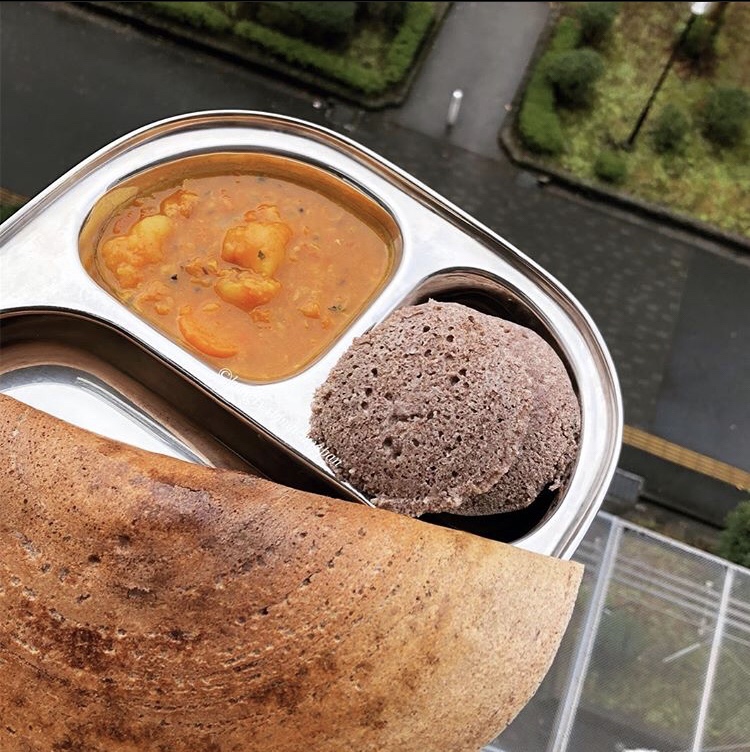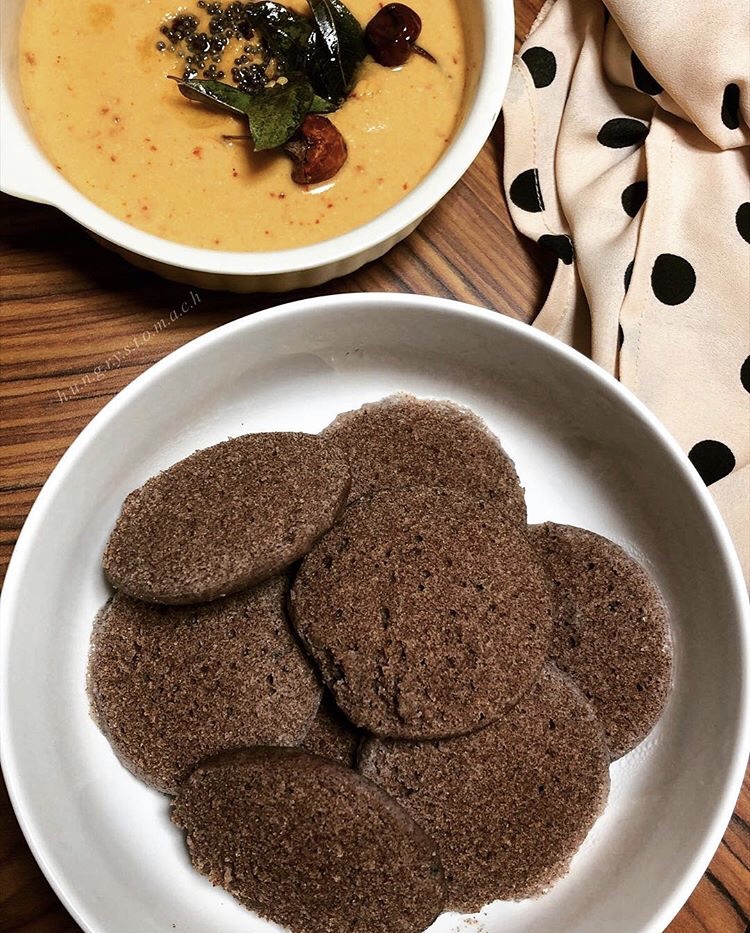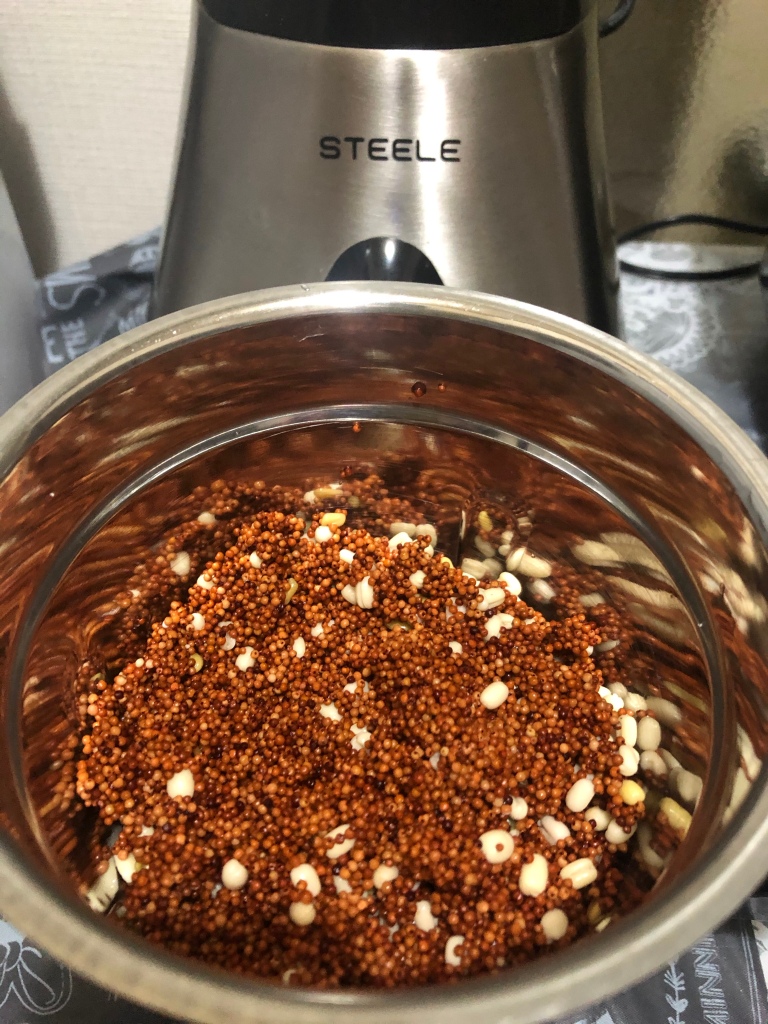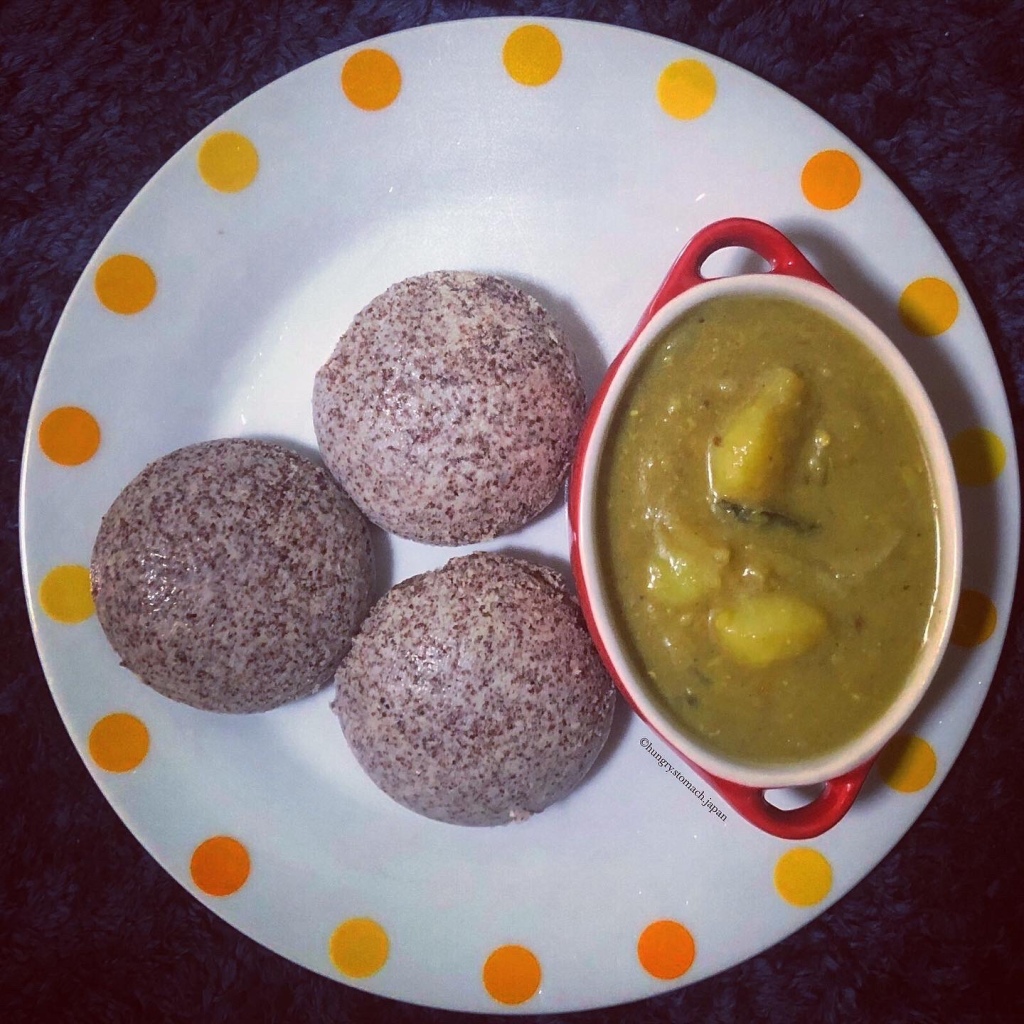Chettinad Cuisines are one of the noteworthy fare in Tamil Nadu. The Chettinad region comprising Karaikudi and adjoining areas is known for both traditional vegetarian as well as non-vegetarian dishes.
Chettinad curries are distinctly aromatic, spicy and fiery. It has a lot of flavours going on, so finding the perfect blend of spices is the key. The base that adds volume to most of the signature curries is made up of freshly roasted & ground spices, red chillies, ginger, garlic, tamarind and coconut.
Chettinad chicken is one of the most famous among dish them. This curry is not for the faint-hearted, but it is definitely a celebration of spices that we have to balance well! Today i’m sharing the egg version from this cuisine!
Chettinad Egg Curry
Chettinad Egg curry, is one of the finest and most authentic egg curry recipe that I have made. This spicy curry too is laced with red chillies and coconut.
If you like less spicier curries, use dried Kashmiri red chilies and remove seeds from them. You will get the colour and flavour without the heat of chilies in the curry.It’s easy to make and tastes simply delicious! This curry goes well with Roti, Rice, Dosa. Do you love spicy curry? Then this is for you.
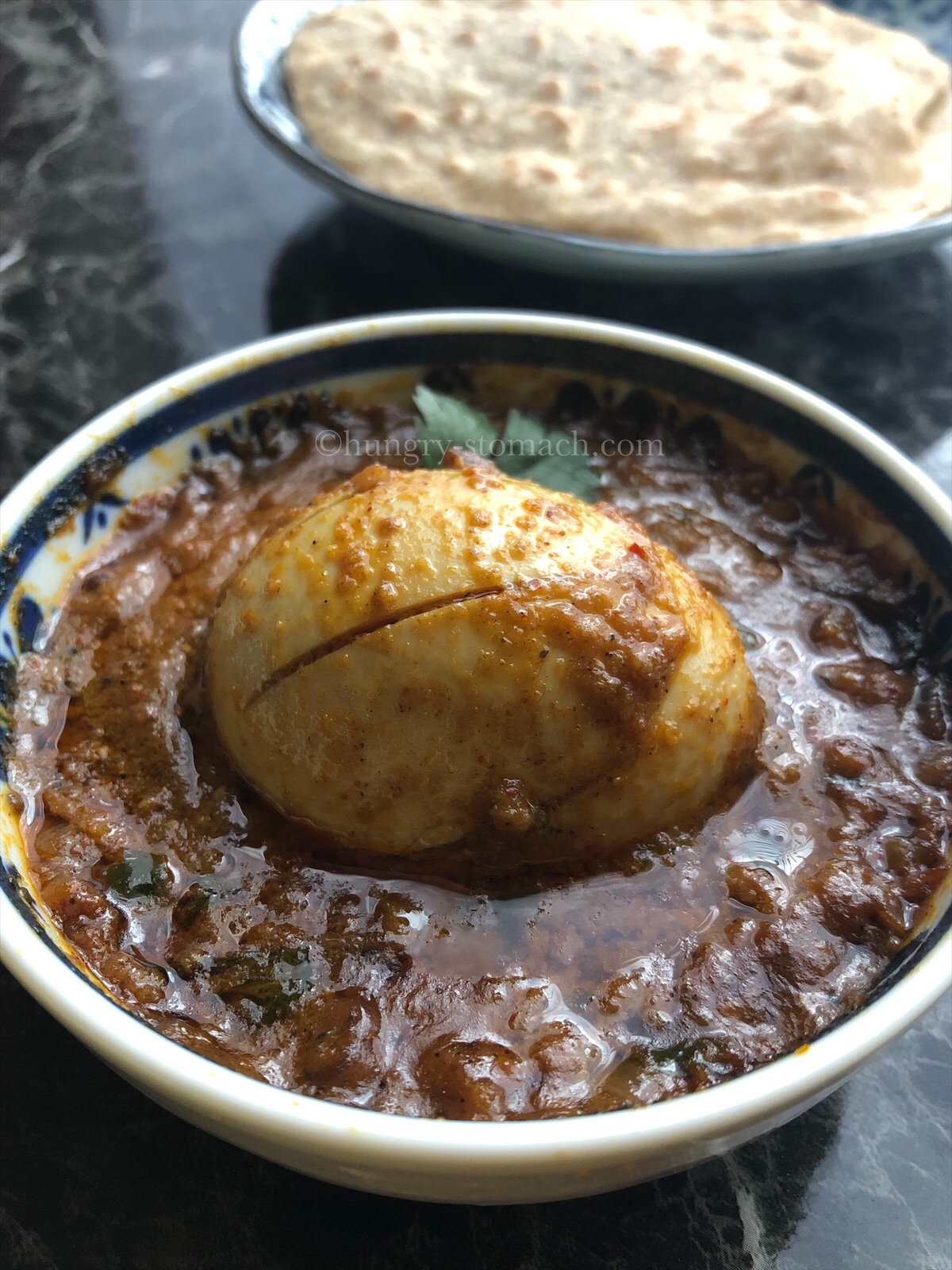
Ingredients
For Chettinad Spice Mix
- 5 to 6 dry red chilies
- 1 mace
- An inch stick cinnamon
- 2 cloves
- 1 cardamom pod
- 1 tsp Black Pepper
- 2 tsp coriander seeds
- 1/2 tsp Fennel seeds
- 1/2 tsp Cumin seeds
- 1/8 tsp Fenugreek Seeds
- 3 Garlic, cloves
- An inch Ginger
- 1/2 cup Coconut
- 1 tsp Oil
For Gravy
- 3 to 4 Eggs, hard boiled
- 1 Onion, Medium, finely chopped
- 1 Tomato, small, chopped
- 1 Green Chilly
- 1/2 tsp Mustard Seeds
- 1/2 tsp Cumin Seeds
- A sprig, Curry leaves
- 1/4 tsp Turmeric Powder
- 1 tsp Redchilli Powder
- 1/2 tbsp Tamarind Paste
- 1/8 tsp Asafoetida
- 1/8 cup, Coriander Leaves, chopped
- Salt
- 1 tbsp Oil
Instructions
- Boil eggs, peel the shell. Make a few slits on the egg white with a fork carefully without penetrating deep into the yolks.

- Heat a teaspoon of oil in a thick bottomed pan. Add all the ingredients mentioned under ‘for Chettinad spice mix’. Roast them until spices turn fragrant and coconut starts to turn brown.

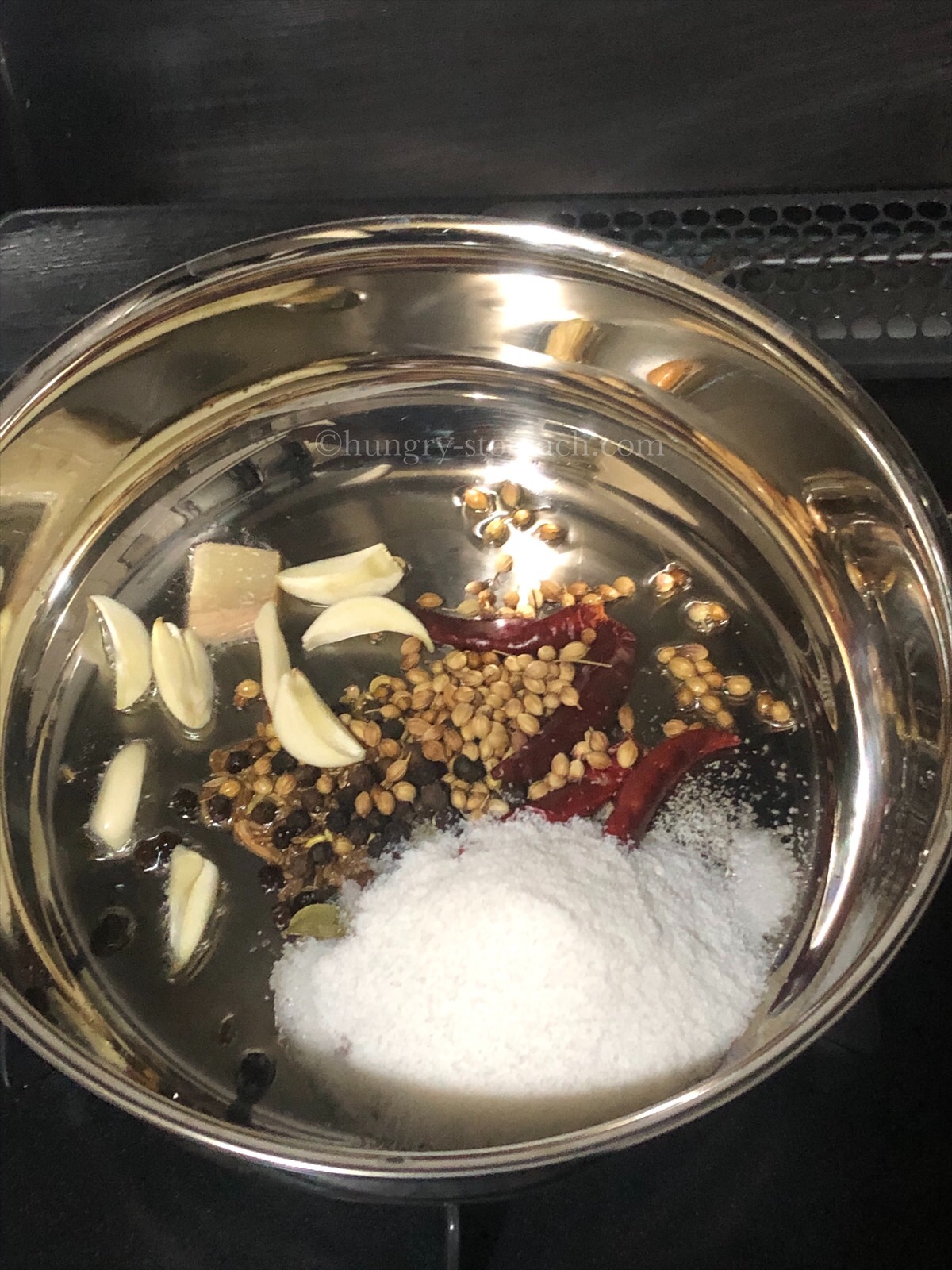
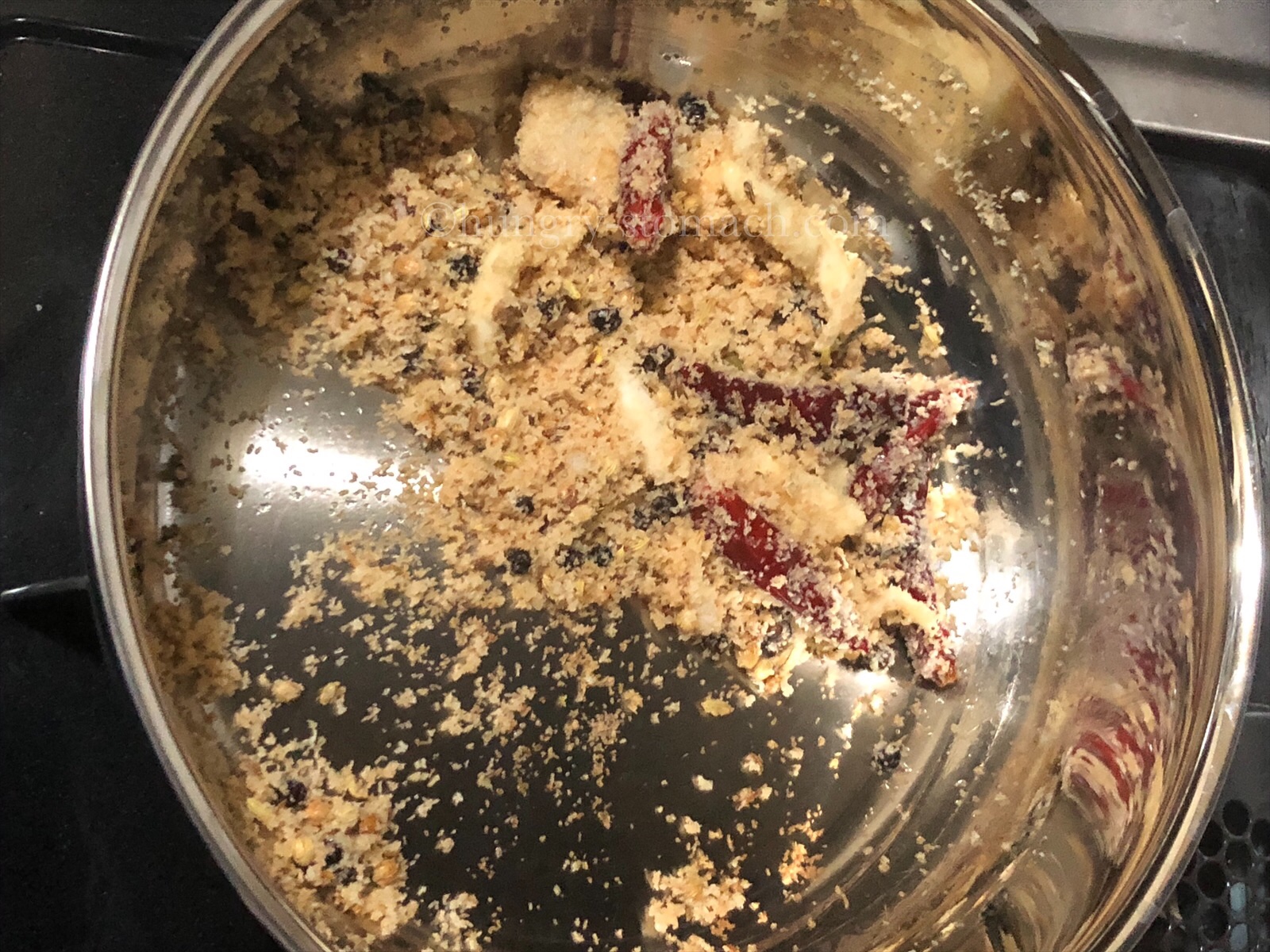 Remove and let it cool. Grind to a paste with little water.
Remove and let it cool. Grind to a paste with little water.
- Now heat 1 tbsp of oil to the same pan. Splutter cumin seeds, mustard seeds and curry leaves. Fry for a minute.

- Add in slit green chilli and onions and saute until the onions turn crisp and golden.
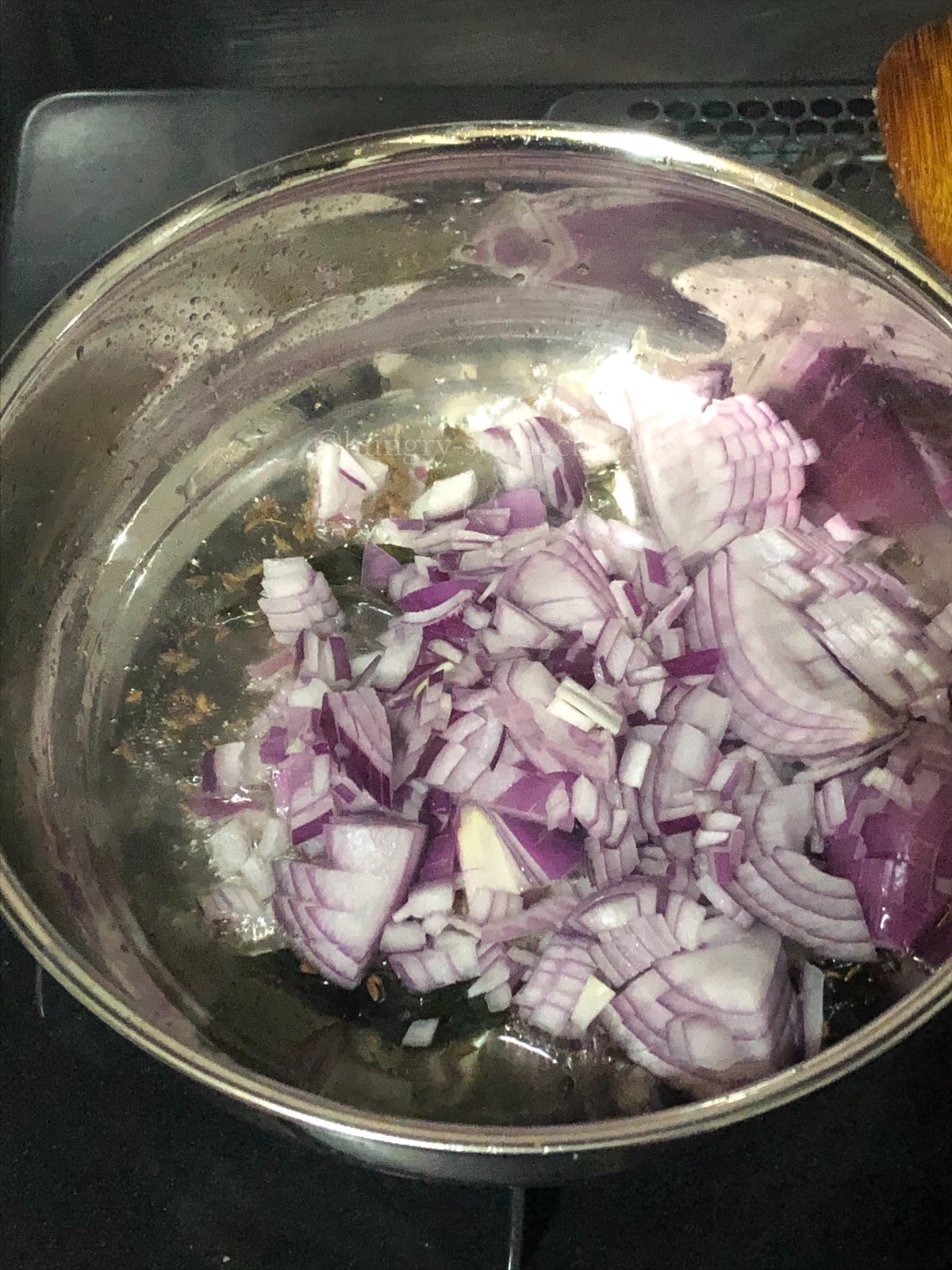
- Add tomatoes and cook until tomatoes turn soft and mushy.

- Now add in the spice powders along with salt and fry until oil oozes from the sides.

- Further to this, pour in the masala paste, tamarind paste and fry the masala for a couple of minute.
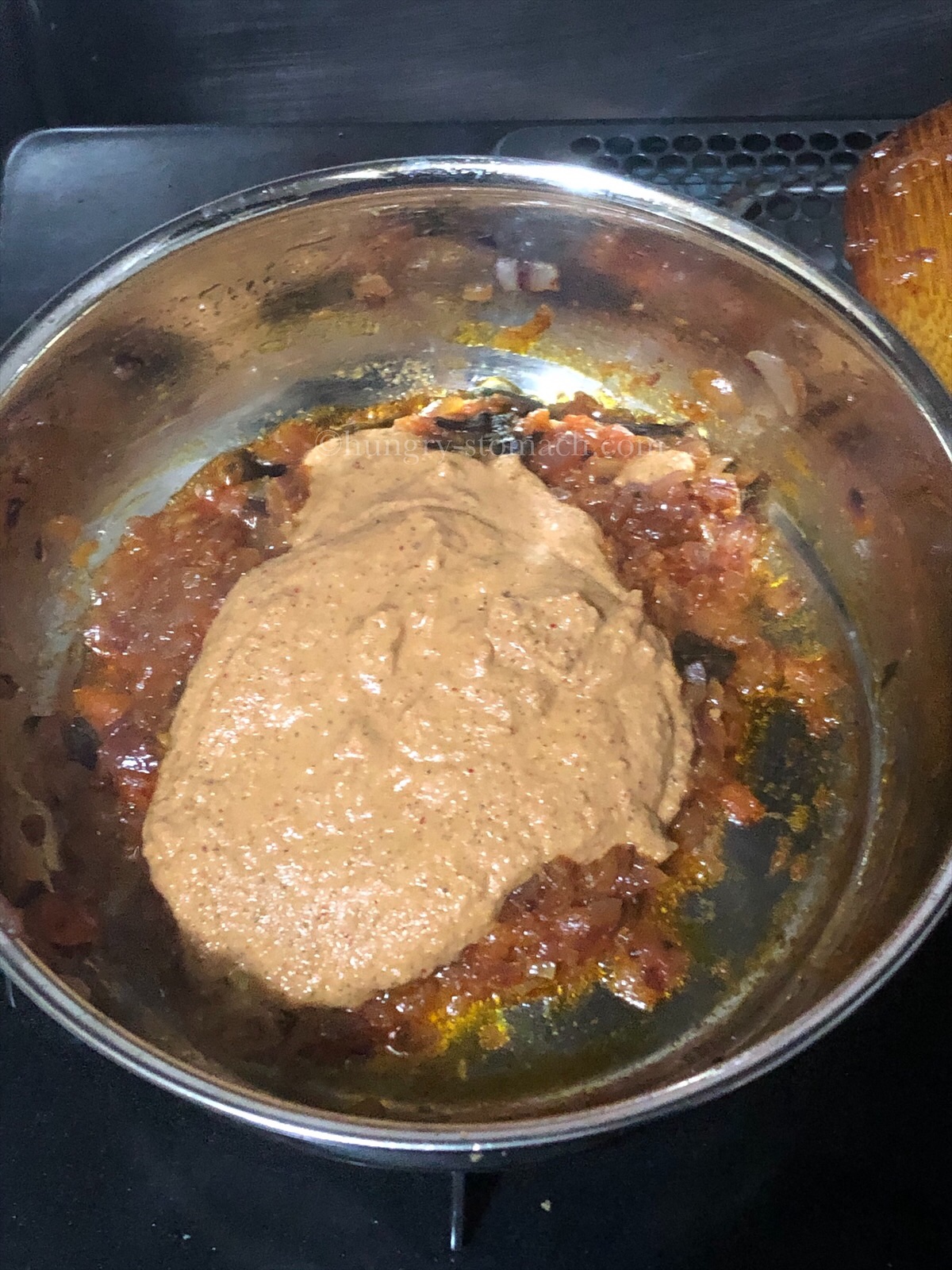
- Add 1.5 cups water based on the consistency you require. Mix well. Close and cook on medium heat for about 15 minutes.
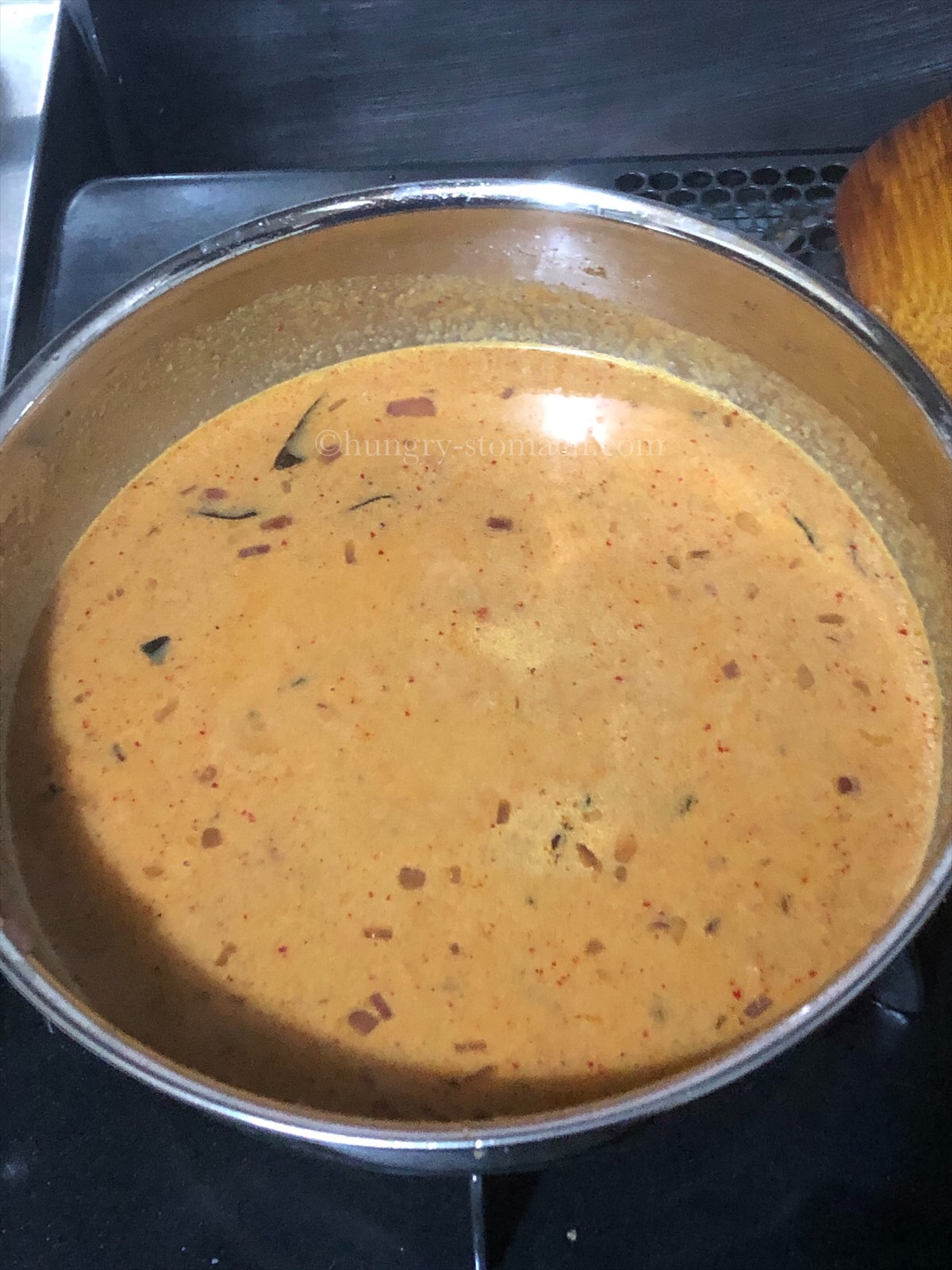
- Open the lid. Give a gentle mix and add the boiled eggs into the curry, simmer and cook for another 8 to 10 minutes.

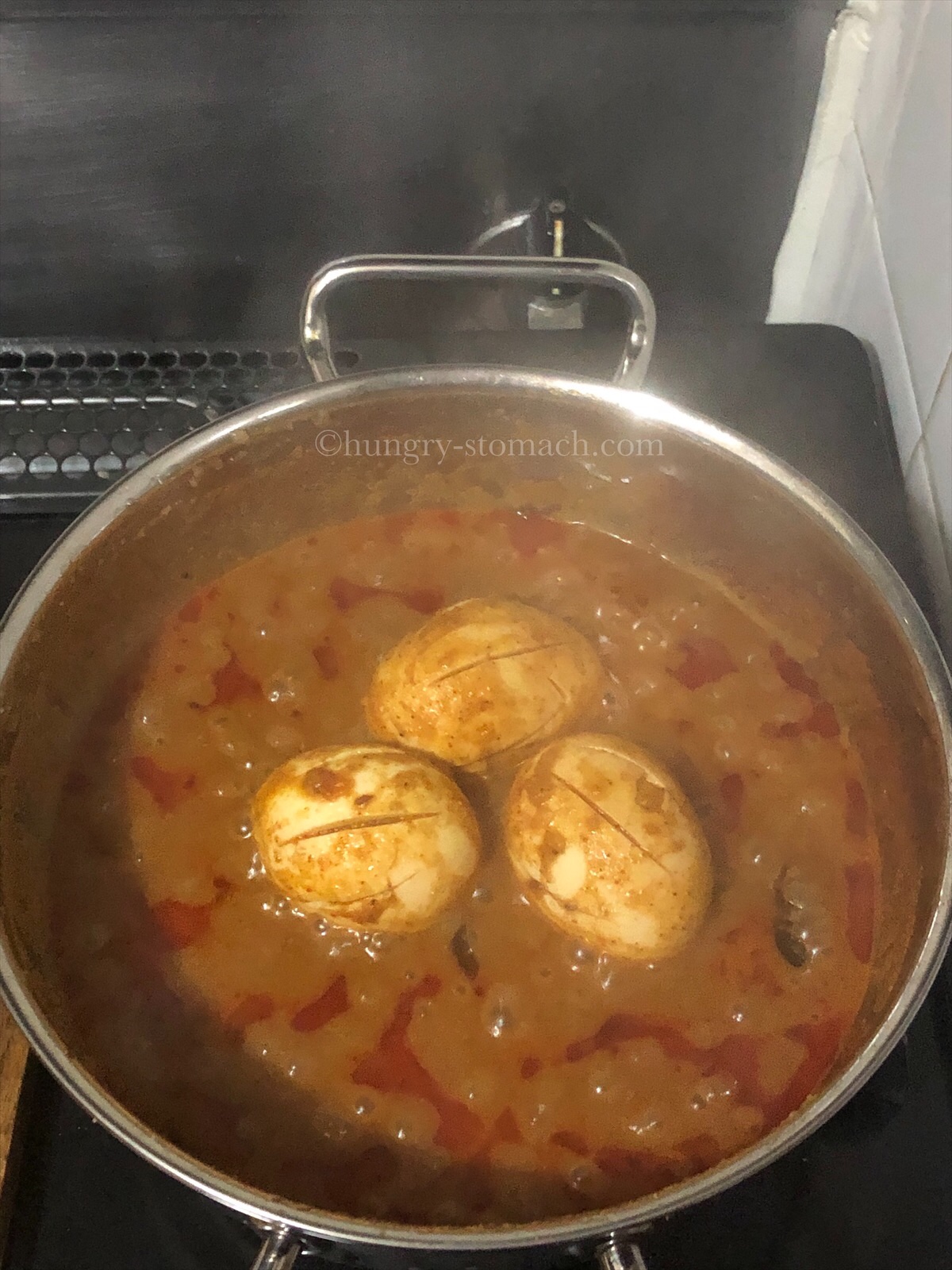
- Once the curry reaches the desired consistency, turn off the flame. Garnish with chopped coriander leaves.
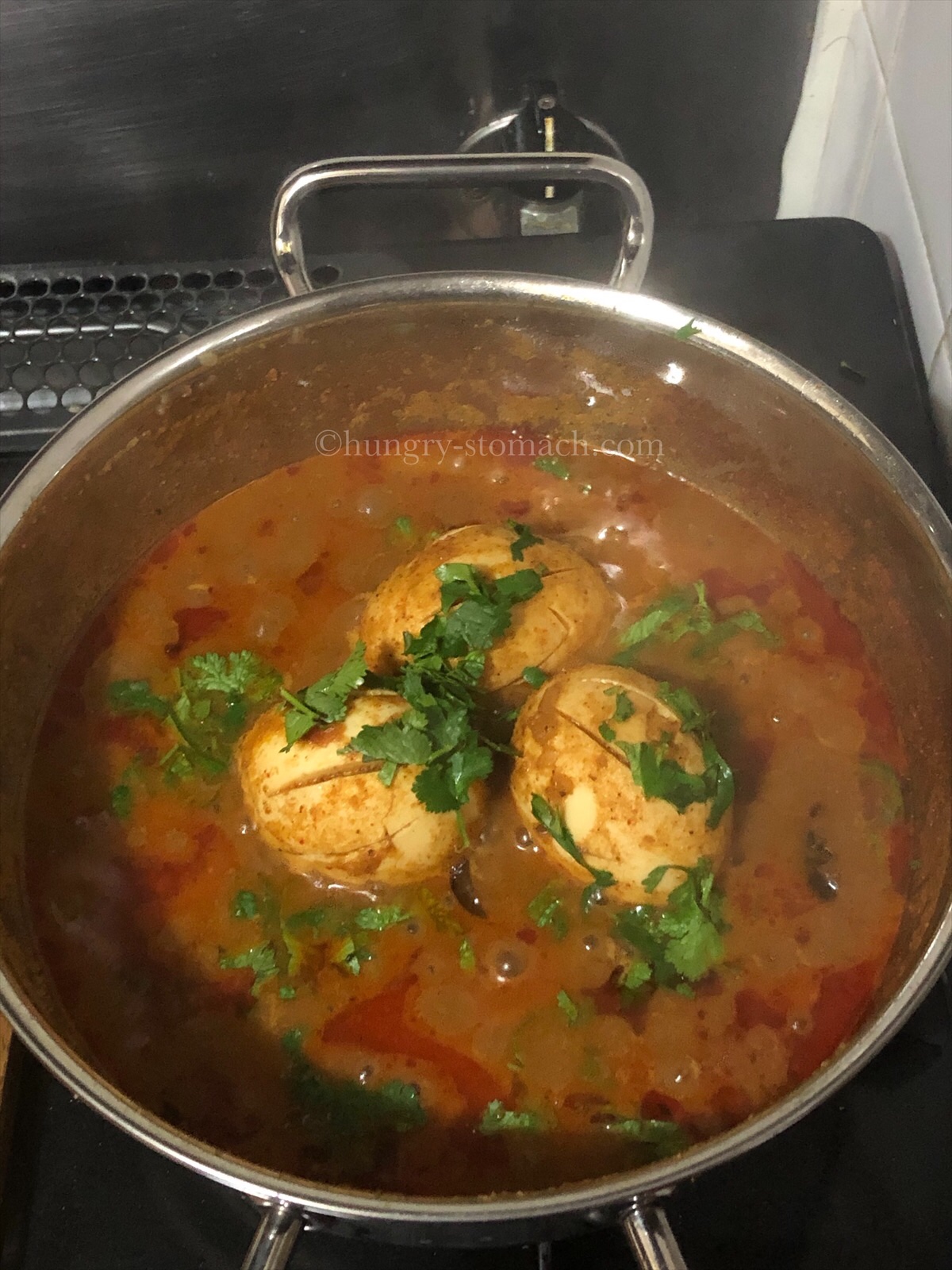
- Relish with Roti or rice of your choice.



